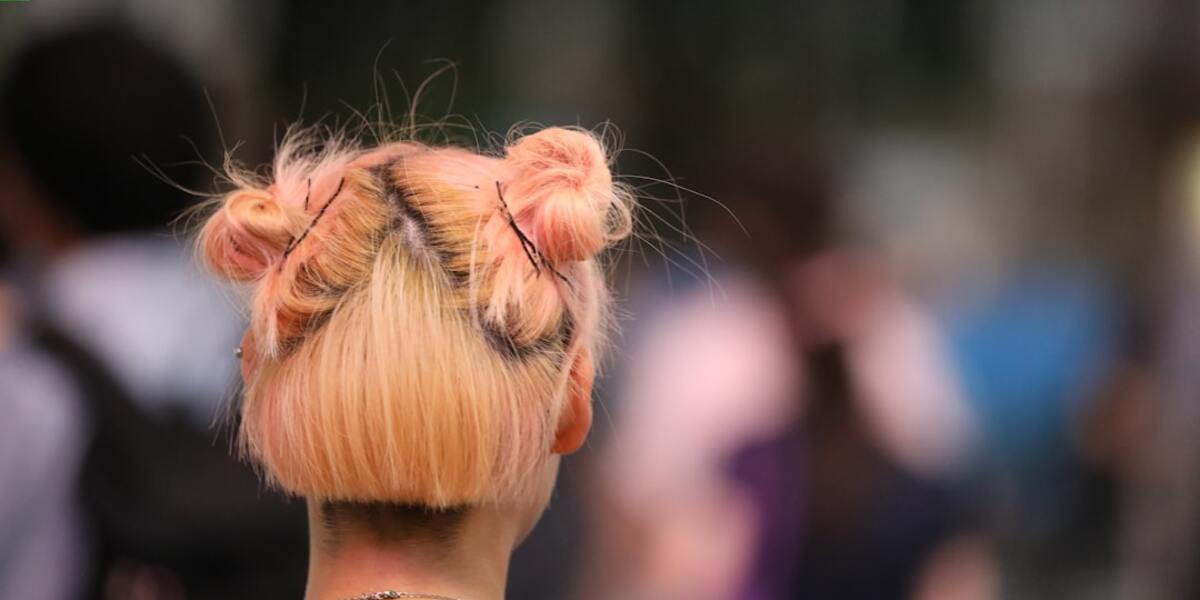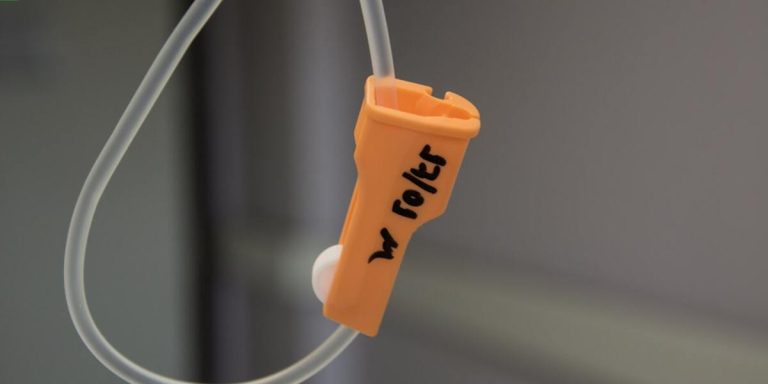PRP Treatment for Hair Loss: An In-depth Analysis and Overview
Unraveling the complexities of hair loss often leads us to advanced remedies like PRP treatment for hair loss. This wonder in medical science has been making positive waves within dermatology circles, promising a new lease of life for those grappling with receding hairlines and bald patches. In essence, Platelet-Rich Plasma (PRP) therapy harnesses the healing potential present in our own blood to stimulate growth factors which help regenerate lost or thinning scalp follicles.
Many questions surround this novel approach towards treating alopecia conditions, such as how it works, what one can expect from the procedure, and whether there is scientific evidence supporting its effectiveness.
At Soulphany, we dedicate ourselves to providing a comprehensive analysis that debunks myths and sets realistic expectations about innovative hair loss treatments like PRP Therapy. Continue reading to understand how you could potentially revitalize your crowning glory.
Did you know?
PRP Treatment, commonly used for treating injuries in athletes, has been scientifically proven to also stimulate hair growth by promoting increased blood supply to the hair follicles.
Understanding PRP Treatment for Hair Loss
The Platelet-Rich Plasma (PRP) treatment has become a beacon of hope in the battle against hair loss. By harnessing the healing powers inherent within your own blood cells, this innovative therapy targets thinning or balding areas to stimulate natural growth and revitalization.
Firstly, let’s dive into what PRP exactly is. This procedure involves drawing your blood and using a centrifuge to separate out platelets-rich plasma. These tiny particles hold immense regenerative abilities that can be beneficial not just for injuries but also for mitigating hair loss issues.
The extracted PRP is then injected back into scalp regions experiencing reduced hair density.
However, it’s important to set realistic expectations from this method as consistency plays an integral role in achieving noticeable results. Generally, people may require several sessions spaced approximately four weeks apart before they begin observing any significant improvement in their condition.
Remember though while it offers promising prospects, everyone’s experience with PRP treatment differs due to variable factors like health status, age etc., hence individual outcomes vary too! So if you’ve been considering forms of ‘hair-replenishing’ treatments recently – there’s no harm knowing more about how PRPs might actually help!
Finally leveraging modern technology advancements along with our body’s innate healing capacities – truly reflects today’s era where scientific innovation meets wellness goals! Always remember however- informed decision-making should ideally precede these ventures ensuring holistic well-being over mere cosmetic benefits.
The Science Behind Platelet-Rich Plasma Therapy
Plasma makes up 55% of our blood composition. This yellowish liquid serves as a medium for red cells, white cells and platelets transporting them through our body. Platelets are significant due to their role in clotting blood but there’s more; they possess hundreds of proteins known as growth factors which are crucial in healing injuries.
In PRP treatments, medical professionals harness these growth factors’ restorative abilities with an intent to rejuvenate damaged or weak hair follicles – often identified as a root cause for hair loss.
The procedure commences by drawing your own blood—usually from your arm—and spinning it using a centrifuge machine until the rich platelets separate from other parts of the blood after several minutes later. The resultant substance is what we call ‘platelet-rich plasma’, loaded with approximately five times higher concentration than usual quantity found circulating through our bodies.
This concentrated solution injected directly into areas on scalp experiencing thinning or balding can stimulate inactive or newly implanted hairs back into active phase– extending lifespan while enhancing overall density and thickness over time giving fuller appearance even under criticism by glaring sunlight!
Comparing PRP to Other Hair Restoration Methods
When it comes to hair loss treatments, PRP (Platelet-Rich Plasma) therapy has gained popularity in recent years. Its effectiveness and non-surgical nature make it stand out amidst other options. However, is PRP the right solution for everyone?
Let’s compare this treatment method with more traditional approaches.
PRP involves extracting a sample of your blood and processing it to isolate platelets rich in growth factors. These are then injected into areas where you’re experiencing hair thinning or loss, stimulating natural hair growth by repairing damaged follicles on a cellular level.
On the opposite end, we have methods like Finasteride and Minoxidil – popular drugs used to stave off further losses while promoting new growth of existing hairs that are still viable. While cost-effective for many people seeking help with early-stage balding issues, they aren’t without their drawbacks: potential side effects may include sexual complications and irritation respectively.
Then there’s laser therapy which applies low-level lasers directly onto your scalp intending to stimulate circulation around the hair roots thereby encouraging new shaft formation from these points outwards; however its success rates can vary wildly among different individuals so you’d want professional advice before embarking on such an endeavour alone at home using over-the-counter devices available today!
Candidacy and Expectations for PRP Hair Loss Treatment
Determining who makes a suitable candidate for PRP (Platelet-Rich Plasma) hair loss treatment is the first step in managing expectations. It’s essential to understand that this procedure may not be viable or impactful for everyone experiencing hair thinning or baldness.
Typically, individuals in the early stages of genetic-patterned baldness make ideal candidates. When hair loss begins due to androgenetic alopecia – a common condition causing hair follicles to shrink over time – starting PRP treatments as soon as possible demonstrates promising results.
PRP therapy works by processing your blood so it’s concentrated with platelets — cells proven helpful against inflammatory diseases. These are then injected into your scalp aiming at stimulating underperforming follicle growth leading ultimately towards thicker, healthier strands of hair.
Understanding what one should expect post-procedure can aid prospective patients gauge whether they wish to proceed with this innovative technique. While many have seen impressive outcomes following their PRP sessions, like every medical treatment there isn’t an absolute guarantee of success.
Most notably though, improvements take time; immediate changes are seldom noticeable owing largely because our natural cycle takes its own course while regenerating lost hairs. Expect subtle enhancements initially which gradually build up after repeated procedures usually spaced about 4-6 weeks apart depending on individual assessment by the specialist conducting these non-surgical interventions.
Who Is a Good Candidate for PRP?
Anyone struggling with hair loss might consider Platelet-Rich Plasma (PRP) as a potential solution. However, it’s important to understand who would qualify as an ideal candidate for this procedure.
Firstly, PRP is especially beneficial for those in the early stages of hair thinning and baldness. This procedure uses your own blood cells to stimulate natural hair growth; hence if you’ve started noticing that your once thick mane is now thinning, PRP treatment could be just what you need. It’s crucial though, that some active follicles are still present on the scalp since they respond most effectively towards this stimulation.
Secondly, age plays another significant factor when assessing candidacy for PRP treatments. Younger individuals between 20-40 years tend to derive more benefit than older people aged above 60 years due to their naturally higher levels of cell regeneration.
Thirdly also take into consideration overall health status before opting for any medical procedures including PRP therapy . People suffering from chronic diseases such as liver disorder or cancer may not see positive results like healthier individuals because these conditions can affect body’s ability to heal itself which directly impacts efficacy of platelet rich plasma therapy .
Lastly lifestyle measures equally hold key determining suitability prospective candidates ; emphasis maintaining balanced diet regular exercise regime helps enhancing chances restoring lost strands head full luscious locks again!
What Results Can You Anticipate from PRP Sessions?
PRP treatment for hair loss, short for Platelet-Rich Plasma therapy, has been gaining popularity due to its impressive results. If you’re considering this procedure as part of your battle against balding or thinning hair, it’s essential to set realistic expectations and understand the outcomes.
The PRP process involves drawing a patient’s blood, processing it so only the enriched cells (platelets) remain and injecting these into the scalp. This methodology stimulates natural growth by healing damaged tissue through increased blood supply.
PRP isn’t an overnight magic trick—you need patience to see results. Generally, individuals can expect noticeable changes within three months after therapy.
1. Reduction in Hair Loss: The first noticeable effect usually happens around four weeks after initiating treatments with patients reporting significant decrease in daily hair fallout.
2. Enhanced Hair Growth Speed: Within two months of regular sessions, many have witnessed faster regrowing strands than before they started their journey with PRP.
3. Increased Thickness & Volume: Around 90 days following initial injection sequences are complete; patients often experience new growth contributing to overall volume increase – making way for thicker locks!
4.Scalp Health Improvement: As PRPERTuses body’s own platelets rich in proteins encouraging soft tissue repair —you may also observe improvements related health including reduced irritations or itchiness common side effects alopecia conditions severe dandruff issues.
The Procedure: Step-by-Step Guide to PRP Treatment
Embarking on the journey to combat hair loss with PRP (Platelet-Rich Plasma) treatment begins by obtaining a small quantity of your blood. In 2023, this innovative method has become incredibly popular due to its impressive results and natural approach. The drawn blood is placed in a centrifuge machine designed specifically for spinning the material at high speeds.
Once spun, it separates into three distinct components: red cells, platelet-poor plasma, and most importantly for our purpose – platelet-rich plasma. This process aids in congregating your body’s healing factors into one potent solution that will be injected back into you.
The next step initiates post-preparation—the areas of concern on your scalp are numbed using local anesthesia ensuring minimal discomfort during the procedure. Afterward comes injecting prepared PRP directly onto those targeted spots stimulating vital growth factors within those follicles that have slowed or ceased producing hair.
In conclusion, while each individual experiences vary based on their unique physiology but typically notice improvement after two months following this non-surgical therapy — making PRP an outstanding option among various available hair loss treatments today because it utilizes nothing foreign – only what naturally exists within our bodies amplified.
Preparing for Your First PRP Session
The process of preparing for your first PRP session involves several steps. Each step helps optimize the effectiveness of the treatment and ensures that you are ready to reap all its benefits in combatting hair loss.
1. **Initial Consultation:** The preparation phase begins with an initial consultation with a qualified healthcare provider who specializes in PRP treatments for hair loss. This is where they will assess your suitability, explain the procedure details, answer any questions you might have about it, and discuss expected results.
Your health status influences how well you respond to PRP therapy; hence a thorough evaluation is essential prior to starting sessions.
– A comprehensive medical history assessment takes place.
– Your current medication list gets reviewed (certain medications may affect platelet function).
– Considerations include autoimmune disorders or blood diseases as these could contraindicate PRP use.
This analysis aims at understanding the extent of hair thinning/loss pattern which aids in predicting responses towards treatment better.
Follow guidelines provided by your practitioner diligently, such as:
-Avoid smoking or alcohol consumption before each session since substances impair wound healing.
Aftercare and Follow-up Regimens
After completing your PRP treatment for hair loss, it’s crucial to follow the right aftercare and regimen protocol. Your commitment to these steps ensures that you achieve optimal results.
Firstly, avoid washing your hair immediately after treatment. It’s recommended you wait at least 48 hours before shampooing or conditioning as this gives enough time for recovery of the scalp tissues involved in procedure.
Keep heat styling tools like curlers, straighteners and blow dryers at bay for a few days post-treatment. These devices can delay recovery by causing undue stress on treated areas.
Nutrition plays an essential role in maintaining effective PRP outcomes; therefore incorporating a diet rich in proteins, whole grains and fruits is advisable. A healthy diet boosts your body’s capacity to rejuvenate faster while enhancing healthier hair growth which aligns closely with the goal of PRP therapy.
Avoid rigorous exercises for up to two days following treatment because sweating could potentially irritate sensitive skin around injection sites leading to discomfort or infections.
Minimize alcohol consumption as it has been shown through research studies conducted over recent years that excessive drinking tampers with healing processes within one’s body hence hindering full benefits derived from treatments such as Platelet Rich Plasma (PRP).
Also consider complementing your care routine with vitamin supplements especially those containing Biotin known widely touted its ability support overall health hairs thus assisting significantly towards achieving desired objectives attached regimens advocated hereafter undergoing procedures aimed alleviating challenges posed baldness thinning productive manner year 2023 beyond!
Conclusion
In sum, the PRP treatment for hair loss has become a beacon of hope for those battling persistent hair fall. With its scientific premise and encouraging results, it is gaining momentum in the field of Hair Loss Treatments. However, remember that everyone’s journey with hair loss is unique.
It requires an individual approach and sometimes interplay of multiple treatments.
Do you feel keen to explore more about solutions that could mark an end to your unwelcome tryst with falling strands? We invite you to delve deeper into our website! Here we have extensive resources on various Hair Loss Treatments, demystifying them one at a time; helping make your path towards regrowth easier than ever before!







